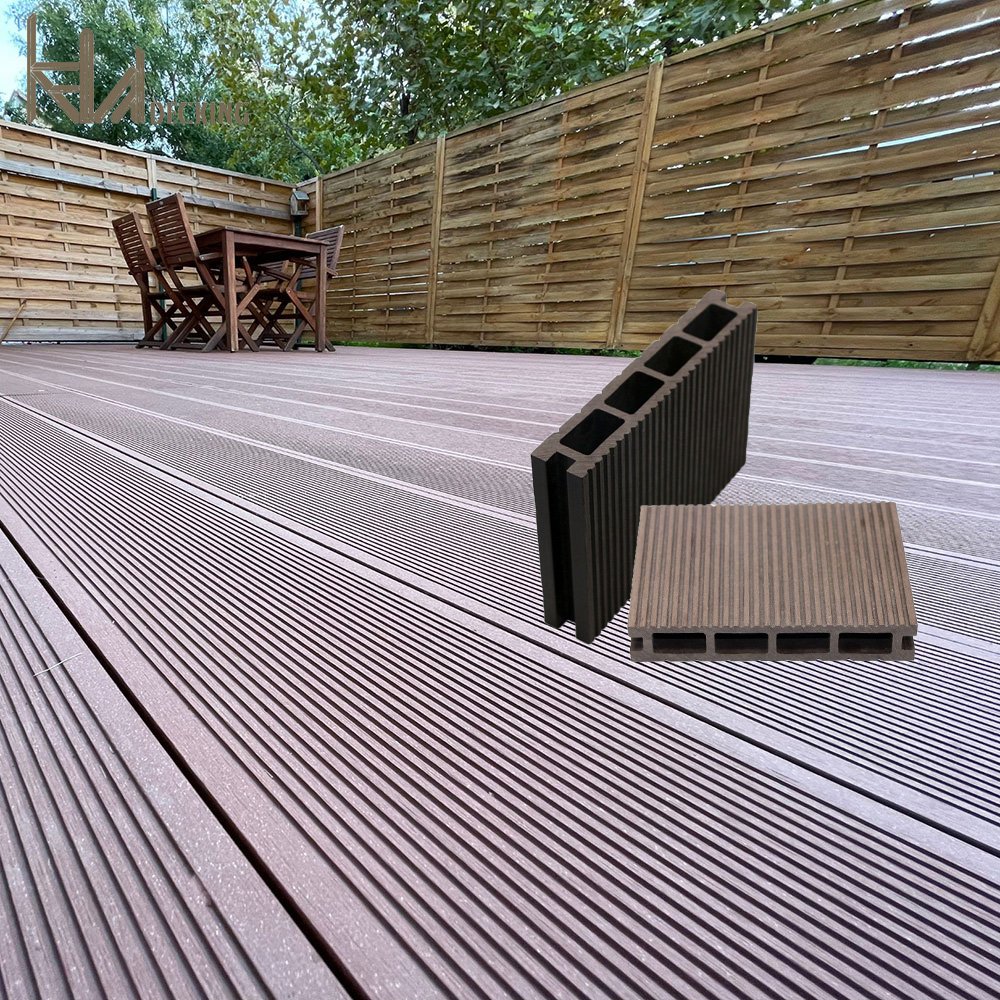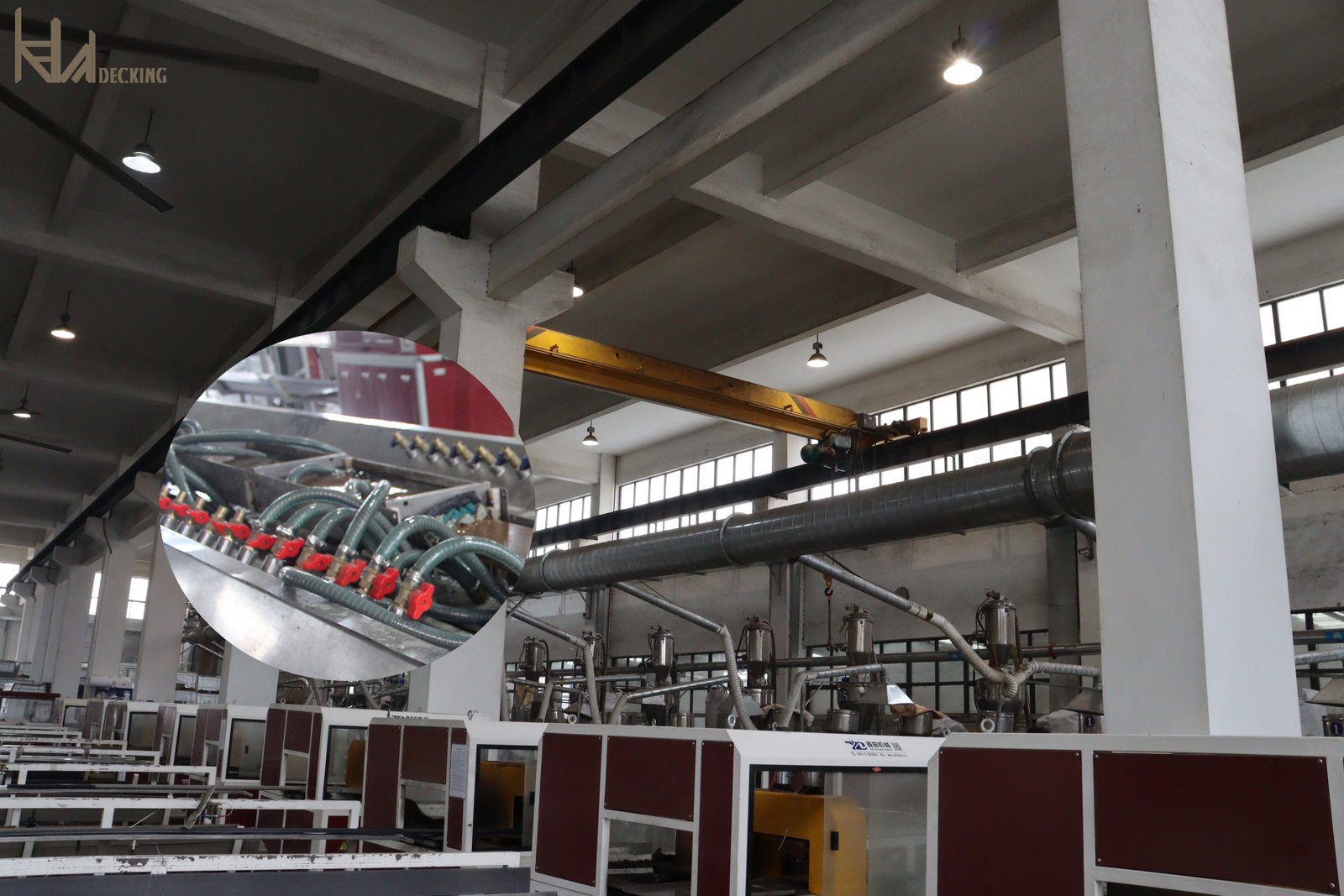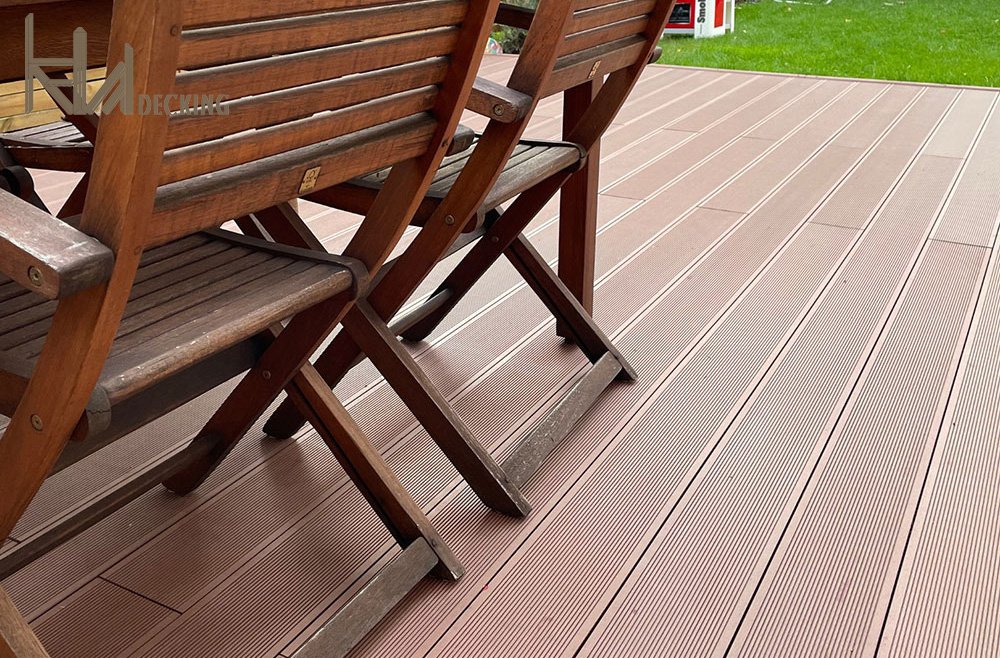
That is a good question asking the core detailed technology about the designs and producing of WPC decks.
Kelaidecking’s traditional WPC decking surface design features narrow groove and wide groove. This dual-surface design is not just for looks — it’s a clever engineering solution that optimizes the extrusion process to ensure better decking quality and performance.
All in all it is a cleverly designed “exhaust groove”. Let’s explain it in detail:
The Core Reason: Solving the “Exhaust” Challenge During Extrusion
Kelaidecking WPC material is made by mixing wood fiber and plastic (such as PE, PP, PVC) and extruding it through a mold under high temperature and pressure. In this process, two main gases are generated inside the material:
1.Water vapor: The wood fiber itself contains moisture. Even if it is dry before production, there will be some remaining water.
2.Volatile gases: Plastics and chemical additives release some low molecular volatile gases at high temperatures. If these gases cannot be exhausted smoothly, they will be trapped inside the decking, resulting in serious defects inside the product:
Surface blistering or bubbles: Gas breaks through the surface before cooling, forming an ugly bubble.
Inside hollow: gases trapped in the center of the decking, greatly reduce the mechanical strength of the decking.
Uneven, dull surface finish: The gas prevents the perfect match between the material and the mold, resulting in a rough surface without gloss.

How the Narrow and Wide Grooves Work Together?
To solve these problems, engineers at KelaiDecking developed two different textures on the rollers.
1.Wide groove (main exhaust )
Function: Mainly responsible for exhaust.
Theory: The wide and deep grooves provide a large space and channel, allowing the gas which is collected inside the material to be quickly exhausted from this surface. When the high-temperature softened wood-plastic raw material passes through the roller, the gas is squeezed out through these wide grooves from the inside.
Analogies: Imagine a wide highway that allows large numbers of vehicles to pass quickly.
2. Narrow Groove (auxiliary exhaust and pressurization surface)
Function: Assist exhaust, while ensuring enough touch pressure.
Auxiliary exhaust: The narrow and dense grooves can also exhaust air, but its channel is relatively small, and the exhaust capacity is not as good as the wide groove.
Ensuring adequate touch area: It is crucial. If both surfaces have wide groove, the touch area between the roller and the decking becomes too small, resulting in insufficient pressure to compact and smooth the decking. The narrow groove provides a larger touch area, ensuring the necessary forming pressure to achieve higher density and a more compact, smooth surface.
Analogies: Imagine a network of branch roads in a city that also diverts traffic (exhaust), but more importantly, connects thousands of homes (ensuring pressure transfer).
Summary: Synergistic effect of double groove design
When the wood-plastic composite decking passes through the extrusion machine: The wide groove faces upward, serving as the primary exhaust channel to rapidly “suck out” most of the gas. The narrow groove faces downward: While providing auxiliary exhaust, it relies on a larger touch area to firmly press down from below, ensuring stability of size, smooth surface texture, and a dense structure.
This “one main, one auxiliary” and “one loose, one tight” combination perfectly balances the two seemingly contradictory but crucial requirements of “exhaust” and “pressure” in extrusion molding.
Impact on installation
It’s necessary to note that this design is required by manufacturing rather than functional considerations for decking installation. In actual installation: There are no mandatory specifications regarding which side should face up or down. Early wood-plastic composite decking often had similar appearances on both sides. Modern versions typically feature a more realistic wood grain pattern printed on one side (usually the narrow groove due to its flatter texture), making that side with the wood grain face. From a slip resistance perspective, the wide-groove has deeper grooves which theoretically provide slightly better anti-slip, though the difference is minor.
The design with narrow groove and wide groove from Kelaidecking traditional WPC is a classical and practical engendered solution. Its aim is to effectively exhaust the inner gases of the material during extruding process, and promise enough pressure to make the shape at the same time. In such case Kelaidecking will produce dense structure, smooth surface and no bubbling defects qualified products.




